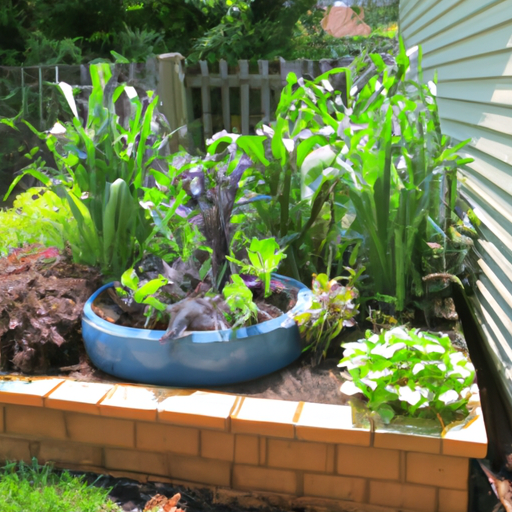Achieving Edible Landscaping Goals through Innovative Container Garden Design
In recent years, there has been a growing interest in edible landscaping, which combines the beauty of traditional landscaping with the functionality of growing food. This trend has given rise to innovative container garden designs that allow individuals to achieve their edible landscaping goals, regardless of their space limitations.
Traditionally, gardening was limited to large outdoor spaces with ample room for planting beds and rows of vegetables. However, with the increasing urbanization and limited outdoor space in many modern homes, it has become a challenge for individuals to grow their own food. Luckily, container gardening offers a practical solution by allowing people to garden even in small balconies, patios, or rooftops.
One of the main advantages of container gardening is its versatility. Whether you have a small apartment balcony or a spacious rooftop terrace, there are countless options for incorporating edible plants into your landscape design. From classic clay pots to modern self-watering containers and vertical gardening systems, there is a wide variety of choices available that can fit any aesthetic preference or space limitation.
When designing an edible landscape using containers, it is essential to consider both functionality and aesthetics. The first step is selecting the right containers for your plants. Where possible, choose larger containers as they provide more soil volume and retain moisture better than smaller ones. Additionally, ensure that your containers have proper drainage holes at the bottom to prevent waterlogged roots.
To create an aesthetically pleasing arrangement, consider using different sizes and shapes of containers to add visual interest. Incorporate vertical elements such as trellises or stakes to maximize space utilization and create a multi-dimensional effect. Utilize hanging baskets for trailing plants like strawberries or cherry tomatoes that can cascade downwards while adding color and texture.
When it comes to selecting plant varieties for your container garden, there are numerous options available depending on your preferences and the amount of sunlight your space receives. Herbs like basil, thyme, and mint are popular choices that require minimal space and can be easily incorporated into various dishes. Salad greens like lettuce and arugula are also well-suited for container gardens due to their shallow root systems.
If you have a bit more space available, try growing compact fruiting plants such as patio tomatoes or dwarf citrus trees. These plants can thrive in larger containers and provide a bountiful harvest over the growing season. Additionally, consider incorporating edible flowers like nasturtiums or pansies into your container arrangements to add color and a unique flavor element to your dishes.
When designing your container garden, it is important to ensure proper care for your plants. Container gardens generally require more frequent watering compared to traditional garden beds since containers tend to dry out faster. To reduce watering frequency, consider using self-watering containers or incorporating water retention additives in the soil mix.
Regular fertilization is also crucial for healthy plant growth and productivity. In a container garden, nutrients can quickly become depleted from the limited soil volume. Therefore, it is recommended to use slow-release or organic fertilizers to provide a steady supply of nutrients over time.
Innovative irrigation systems such as drip irrigation or microsprinklers can greatly simplify watering tasks by providing efficient water distribution directly to the roots of plants. These systems can be set on timers or controlled via smartphone apps, allowing for easy management even when you are not at home.
Container gardening not only provides the opportunity to grow your own food but also offers numerous environmental benefits. By utilizing containers made from recycled materials like plastic bottles or repurposed household items, you can reduce waste while creating a sustainable garden space. Additionally, growing your own food reduces reliance on store-bought produce that often travels long distances, resulting in a smaller carbon footprint.
In conclusion, achieving edible landscaping goals through innovative container garden design is an excellent solution for those with limited outdoor space. By carefully selecting containers, choosing the right plant varieties, and implementing efficient irrigation systems, you can create a functional and beautiful landscape that produces a bountiful harvest. Container gardening empowers individuals to grow their own food, regardless of their location or available space, while also promoting sustainability and reducing environmental impact. So, why not start your own container garden today and experience the joy of harvesting your homegrown produce?













